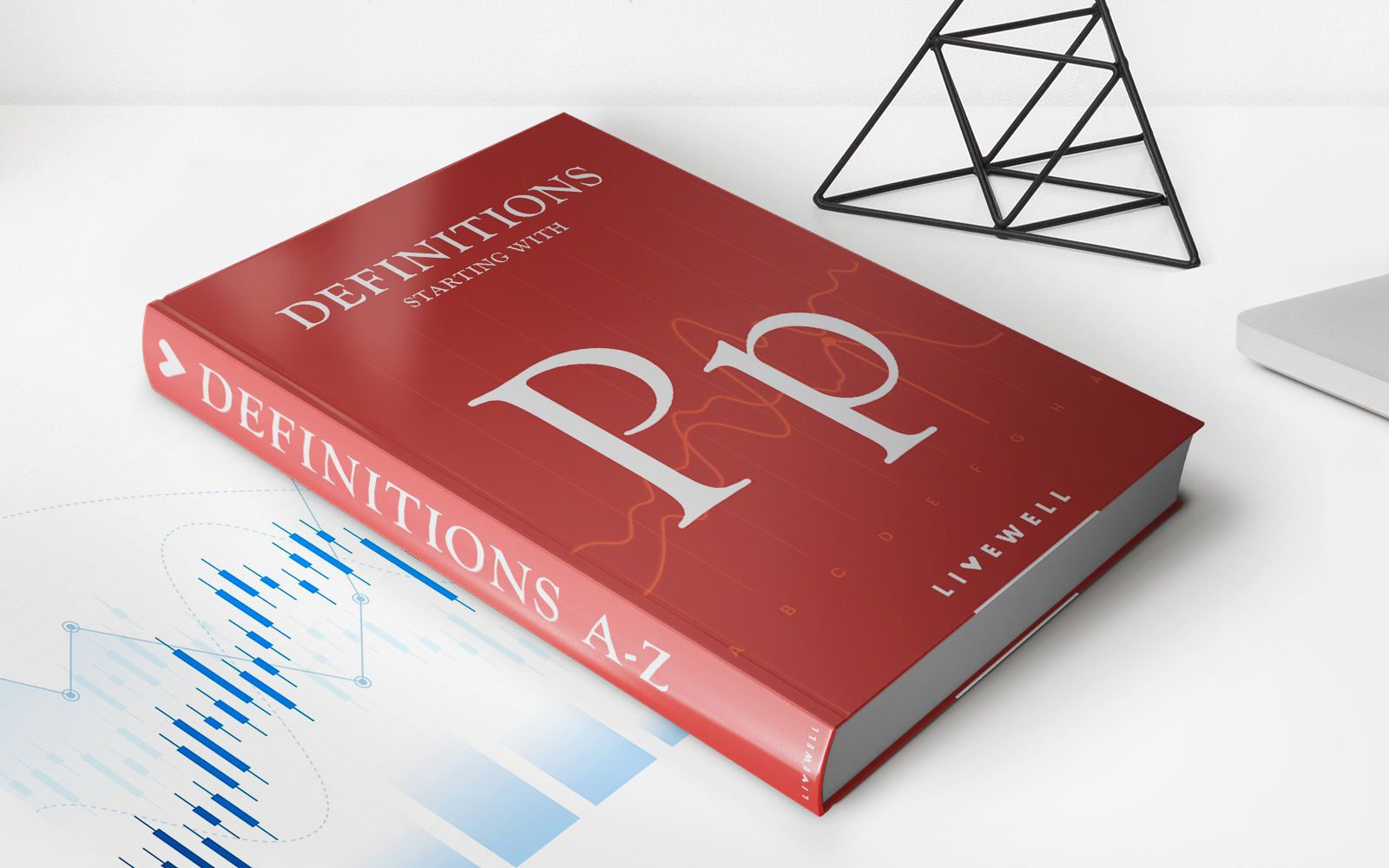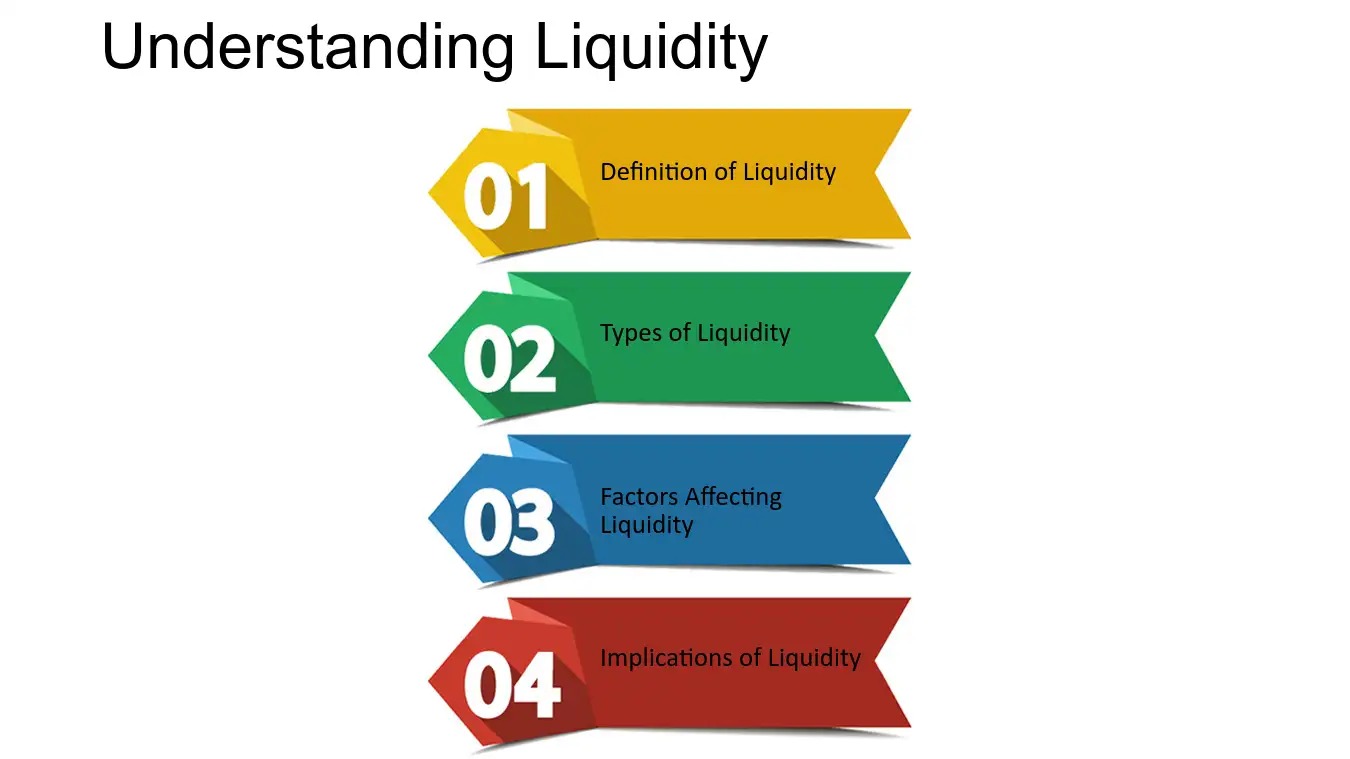

Finance
What Is Purchase Order In Accounting
Published: October 7, 2023
Understanding the role of purchase orders in finance and accounting. Discover how purchase orders streamline financial processes and ensure accurate record-keeping.
(Many of the links in this article redirect to a specific reviewed product. Your purchase of these products through affiliate links helps to generate commission for LiveWell, at no extra cost. Learn more)
Table of Contents
- Introduction
- Definition of Purchase Order
- Purpose and Importance of Purchase Order in Accounting
- Key Components of a Purchase Order
- Process of Creating a Purchase Order
- Benefits of Using Purchase Orders in Accounting
- Potential Challenges and Solutions in Purchase Order Management
- Common Mistakes to Avoid in Purchase Order Processing
- Conclusion
Introduction
Welcome to the world of finance and accounting! In this article, we will explore the concept of a purchase order and its significance in accounting. Whether you are a business owner, a financial professional, or someone simply interested in understanding the intricacies of financial operations, this article will provide a comprehensive overview of purchase orders and their role in the accounting process.
In the realm of business, efficient and accurate record-keeping is vital for success. This is where accounting comes into play, serving as the backbone of financial management. Within the realm of accounting, purchase orders play a crucial role in tracking and recording purchases made by a company.
A purchase order is a document issued by a buyer to a seller, specifying the details of a purchase transaction. It acts as a contract between the buyer and the seller, outlining the items or services to be purchased, the agreed-upon price, payment terms, delivery date, and other relevant information. This document serves as a legally binding agreement, ensuring that both parties have a clear understanding of the terms and conditions of the purchase.
The purpose of a purchase order in accounting is to provide a systematic approach to managing and tracking expenses. By requiring the use of purchase orders, companies can establish a formal process for approving and documenting purchases. This allows for better control over procurement, financial forecasting, and budget management.
Now that we have established the importance of purchase orders in accounting, let us dive deeper into the key components of a purchase order and understand the process of creating one.
Definition of Purchase Order
A purchase order is a legally binding document used in business transactions to initiate a purchase from a vendor or supplier. It serves as an official confirmation of the buyer’s request to acquire specific goods or services at an agreed-upon price and terms. Essentially, a purchase order outlines the details of the purchase, including quantities, descriptions, prices, delivery dates, and any other relevant information.
When a buyer decides to make a purchase, a purchase order is created and sent to the vendor or supplier. It acts as a formal agreement between the buyer and seller, ensuring that both parties have a clear understanding of the transaction and its terms. The purchase order is typically issued before any payment is made, serving as a request for the vendor to fulfill the order.
In addition to specifying the items to be purchased, a purchase order also includes other essential details, such as the billing and shipping addresses, payment terms, delivery instructions, and any applicable taxes or discounts. This ensures that both parties are on the same page about the expectations and obligations of the purchase.
Once the vendor receives the purchase order, they can review it and either accept or reject the order based on their ability to fulfill it. If accepted, the vendor will proceed with preparing and delivering the requested goods or services. It’s important to note that the purchase order serves as a legally binding agreement, protecting both the buyer and the seller in case of any disputes or discrepancies.
From an accounting perspective, the purchase order is a crucial document. It provides the basis for recording and tracking expenses, as well as ensuring proper control and authorization of purchases. With the use of purchase orders, businesses can streamline their procurement process, maintain accurate financial records, and enhance overall financial management.
Now that we understand the definition of a purchase order, let us explore the purpose and importance of purchase orders in accounting.
Purpose and Importance of Purchase Order in Accounting
Purchase orders play a vital role in the accounting process of any organization. They serve several purposes and hold significant importance in ensuring accurate financial management. Let’s delve into the purpose and importance of purchase orders in accounting.
1. Tracking and Recording Expenses: One of the primary purposes of a purchase order is to track and record expenses. By issuing a purchase order, the company establishes a formal record of the items or services being purchased and the associated costs. This information becomes crucial for financial reporting and analysis, allowing businesses to accurately track their expenses, monitor budget utilization, and assess their financial health.
2. Budget Management: Purchase orders help in managing budgets effectively. When a purchase order is created, it specifies the agreed-upon price for the items or services. This predetermined price ensures that the company stays within its allocated budget for the purchase. By monitoring and controlling purchases through purchase orders, organizations can prevent overspending and maintain financial discipline.
3. Authorization and Control: Purchase orders provide a formal approval process for purchases. Before issuing a purchase order, companies typically require internal authorization from appropriate individuals, such as managers or department heads. This ensures that purchases are authorized and aligned with the organization’s objectives. By implementing a purchase order system, companies can exercise control over their procurement process and prevent unauthorized or unnecessary purchases.
4. Supplier Relationship Management: Purchase orders also play a crucial role in managing relationships with suppliers. By using purchase orders, both buyers and suppliers have a clear understanding of their respective roles and responsibilities. Any discrepancies or issues that may arise can be resolved based on the information documented in the purchase order. This helps in fostering stronger and more transparent relationships with suppliers, leading to better collaboration and mutually beneficial outcomes.
5. Auditing and Compliance: Purchase orders provide a reliable audit trail for financial and internal compliance purposes. The documentation involved in purchase orders, such as item descriptions, prices, and delivery details, can be used as evidence for auditing and compliance purposes. This ensures that the company’s financial transactions meet regulatory requirements and industry standards.
Overall, purchase orders serve as a fundamental component of effective financial management. They facilitate accurate expense tracking, budget control, authorization and control, supplier relationship management, and compliance. By implementing a robust purchase order system, organizations can streamline their accounting processes, enhance financial transparency, and make informed decisions based on accurate and up-to-date financial data.
Next, we will examine the key components of a purchase order.
Key Components of a Purchase Order
A purchase order is a comprehensive document that includes various key components. Each component holds crucial information that helps facilitate a smooth and transparent purchasing process. Let’s explore the key components of a purchase order.
1. Buyer and Seller Information: The purchase order begins by clearly stating the details of both the buyer and the seller. This includes the legal names, addresses, contact information, and any specific identification numbers or codes associated with each party. It is essential to accurately identify both the buyer and the seller to avoid any confusion or miscommunication during the transaction.
2. Purchase Order Number: A purchase order is assigned a unique identification number. This purchase order number serves as a reference point for tracking and managing the order throughout its lifecycle. Companies often have specific formatting or numbering systems for purchase orders to ensure consistency and ease of identification.
3. Date and Delivery Information: The purchase order includes the date it was issued, as well as the expected delivery date. The delivery information specifies when the products or services should be delivered to the buyer. This ensures that both parties are aware of the timeline and can plan accordingly.
4. Item Details: An itemized list of the goods or services being purchased is a crucial component of a purchase order. This includes descriptions, quantities, unit prices, and any applicable taxes or discounts. The item details provide clear specifications of what the buyer expects to receive from the seller.
5. Total Cost: The total cost section of the purchase order calculates the overall cost of the order, taking into account the prices, quantities, and any additional charges. It provides a summary of the financial obligation for the buyer and allows for easy verification and accuracy checks.
6. Terms and Conditions: The terms and conditions outline the agreed-upon terms between the buyer and the seller. This includes payment terms, such as due dates and accepted payment methods, as well as any specific conditions or requirements. It is important to establish clear terms to avoid any misunderstandings or disputes in the future.
7. Signature and Approval: A purchase order requires signature and approval from the authorized individuals, both from the buyer’s side and the seller’s side. This ensures that the purchase order is legally binding and that all parties have agreed to the terms and conditions specified in the document.
These key components provide a comprehensive view of the purchase order and ensure that all relevant information is accurately documented. By including these components, a purchase order serves as a reliable reference for the buyer, seller, and any other stakeholders involved in the transaction.
Now that we understand the key components of a purchase order, let’s explore the process of creating a purchase order.
Process of Creating a Purchase Order
The process of creating a purchase order involves several steps to ensure accuracy, transparency, and proper authorization. Let’s explore the typical process of creating a purchase order.
1. Identify the Need: The first step is to identify the need for a purchase. This could be based on inventory levels, customer demands, or other operational requirements. The buyer determines what goods or services are needed and initiates the purchase order process.
2. Gather Information: The next step involves gathering all the necessary information to create the purchase order. This includes details such as the item descriptions, quantities, agreed-upon prices, and any other relevant information. It’s important to ensure that the information is accurate and up to date.
3. Seek Approval: Depending on the organizational structure, the buyer may need to seek approval from appropriate individuals or departments before creating the purchase order. This could involve obtaining authorization from managers or budget holders to ensure the purchase aligns with the company’s objectives and budgetary constraints.
4. Create the Purchase Order: Once the necessary approvals are obtained, the buyer creates the actual purchase order. This involves inputting all the gathered information into a standardized purchase order template or using accounting/procurement software. The purchase order number is assigned, and the document is prepared for transmission to the vendor.
5. Review and Verification: Before sending the purchase order to the vendor, the buyer reviews and verifies the information for accuracy. This includes double-checking the item descriptions, quantities, pricing, and any other essential details. Any discrepancies or errors should be corrected before proceeding.
6. Transmit the Purchase Order: Once the purchase order is verified, it is transmitted to the vendor or supplier. This can be done through various means, such as electronically via email, online procurement systems, or traditional mail. It is important to ensure that the purchase order reaches the intended recipient and that a confirmation of its receipt is obtained if possible.
7. Vendor Acceptance: The vendor reviews the purchase order upon receipt and may accept or reject it. If accepted, the vendor acknowledges their agreement to fulfill the order based on the specified terms and conditions. In some cases, the vendor may send back a signed copy of the purchase order to confirm their acceptance.
8. Purchase Order Acknowledgment: Once the vendor accepts the purchase order, a purchase order acknowledgment may be sent back to the buyer. This serves as confirmation that the vendor has received and accepted the purchase order, further solidifying the transaction’s legality and clarity.
9. Record-Keeping: Finally, the buyer maintains a record of the purchase order for future reference. This includes filing a copy of the purchase order in an organized manner, typically in a centralized procurement or accounting system. The purchase order serves as a reference document for tracking the status of the purchase, receiving the goods or services, and managing payment processes.
The process of creating a purchase order ensures that all relevant parties are in agreement regarding the purchase transaction. It provides a structured and documented approach for managing purchases, promoting accountability, and facilitating efficient financial and procurement processes.
Now that we have explored the process of creating a purchase order, let’s move on to discuss the benefits of using purchase orders in accounting.
Benefits of Using Purchase Orders in Accounting
The use of purchase orders in accounting brings numerous benefits to businesses. From financial control and accuracy to streamlined procurement processes, purchase orders play an essential role in effective accounting management. Let’s explore the key benefits of using purchase orders in accounting.
1. Expense Tracking and Accurate Financial Reporting: Purchase orders provide a systematic approach to tracking expenses. By using purchase orders, businesses can accurately record and categorize expenses related to specific purchases. This information becomes crucial for financial reporting, enabling businesses to analyze their spending patterns and make informed decisions based on reliable financial data.
2. Budget Management and Control: Purchase orders help businesses manage their budgets effectively. With the use of purchase orders, companies can set spending limits for each purchase, ensuring that they stay within their allocated budget. This prevents overspending and enhances financial control, allowing businesses to achieve their financial goals and objectives.
3. Enhanced Supplier Relationship Management: Purchase orders establish clear and transparent communication between buyers and suppliers. By using purchase orders, businesses can effectively communicate their expectations regarding the purchase, including quantities, delivery dates, and payment terms. This fosters stronger relationships with suppliers, ensuring smooth transactions and potential discounts or favorable terms in the future.
4. Streamlined Procurement Process: Purchase orders provide a standardized and streamlined procurement process. By requiring the use of purchase orders, businesses establish a formal procedure for initiating, approving, and tracking purchases. This ensures that all necessary steps are followed, reduces the risk of errors or oversights, and promotes efficiency in the procurement process.
5. Compliance with Internal Controls and Auditing: Purchase orders contribute to compliance with internal control systems and auditing requirements. With the use of purchase orders, businesses can demonstrate that purchases are made in accordance with established procedures and policies. This facilitates internal and external audits, ensuring transparency, and mitigating the risk of fraud or irregularities.
6. Dispute Resolution: Purchase orders serve as valuable documents for resolving disputes that may arise between buyers and suppliers. If any discrepancies or issues occur during the transaction, both parties can refer to the purchase order to clarify the agreed-upon terms and resolve the dispute more effectively and efficiently.
7. Financial Forecasting and Planning: Purchase orders contribute to financial forecasting and planning. By tracking and analyzing purchase orders, businesses can gain insights into their future expenses, identify trends, and make informed decisions regarding budget allocation and resource planning.
The benefits of using purchase orders in accounting are numerous, ranging from expense tracking and accurate financial reporting to enhanced supplier relationship management and streamlined procurement processes. By implementing a robust purchase order system, businesses can optimize their financial management practices and drive overall efficiency in their operations.
Next, we will explore potential challenges in purchase order management and possible solutions to overcome them.
Potential Challenges and Solutions in Purchase Order Management
As valuable as purchase orders are in accounting, their management can come with its fair share of challenges. Recognizing these challenges and implementing effective solutions is crucial to ensure the smooth and efficient handling of purchase orders. Let’s delve into some potential challenges and their corresponding solutions in purchase order management.
1. Manual Errors and Data Entry Mistakes: One common challenge in purchase order management is the potential for manual errors and data entry mistakes. These errors can lead to inaccurate information, delayed deliveries, and financial discrepancies. To mitigate this challenge, businesses can invest in procurement software or systems that automate data entry and validation, reducing the chances of human errors and improving overall accuracy.
2. Communication and Collaboration Issues: Effective communication is vital in purchase order management. Lack of communication or miscommunication can result in delayed orders, wrong quantities, or incorrect deliveries. To address this challenge, businesses can implement clear communication channels, such as using centralized procurement systems or establishing regular communication protocols with suppliers. This helps ensure that all parties involved have a shared understanding of the purchase requirements.
3. Tracking and Monitoring Purchases: Keeping track of numerous purchase orders can be overwhelming, particularly for businesses with a high volume of transactions. This challenge can be addressed by implementing purchase order tracking systems or using procurement software that provides real-time monitoring and updates on the status of each purchase order. This allows for better visibility and control over the entire procurement process.
4. Purchase Order Approval Bottlenecks: Delayed approvals can cause significant disruptions to the procurement process. When purchase orders require multiple approvals from various stakeholders, bottlenecks may occur, leading to delays in order processing and fulfillment. To overcome this challenge, businesses can implement electronic approval workflows or establish clear guidelines for approval turnaround times. This promotes faster decision-making and ensures that purchases are processed in a timely manner.
5. Supplier Management and Verification: Verifying the authenticity and reliability of suppliers can be challenging, particularly when dealing with new or unfamiliar vendors. To address this challenge, businesses can implement a robust supplier vetting process, which includes background checks, supplier reviews, and performance evaluations. Researching and attaining references can also help in ensuring that suppliers are trustworthy and capable of fulfilling purchase orders.
6. Integration with Accounting Systems: Integrating purchase order data seamlessly with accounting systems can be a challenge for businesses using different software applications. Disparate systems may result in duplicate data entry, manual reconciliations, and errors. To tackle this challenge, businesses can explore purchasing and accounting software that offer integration capabilities or seek the assistance of IT professionals to develop custom integrations between systems.
7. Compliance with Regulations and Policies: Complying with relevant regulations and internal policies can be a challenge in purchase order management. This includes adherence to legal requirements, procurement guidelines, and financial controls. To overcome this challenge, businesses should establish clear policies and procedures, provide appropriate training to employees involved in procurement, and regularly review and update the policies to ensure ongoing compliance.
By addressing these potential challenges and implementing appropriate solutions, businesses can effectively manage their purchase orders, minimize errors and delays, and enhance overall efficiency in their procurement processes.
Now let’s explore common mistakes to avoid in purchase order processing.
Common Mistakes to Avoid in Purchase Order Processing
While purchase orders are invaluable in accounting, there are common mistakes that businesses should be mindful of to ensure a smooth and error-free purchase order processing. By being aware of these mistakes and taking proactive measures to avoid them, businesses can streamline their procurement processes and enhance efficiency. Let’s explore some common mistakes to avoid in purchase order processing.
1. Incorrect or Incomplete Information: Providing inaccurate or incomplete information in a purchase order can lead to misunderstandings, delays, and potential discrepancies. It is crucial to double-check and verify all the information entered in the purchase order, including item descriptions, quantities, pricing, delivery addresses, and any special instructions. Accurate and complete information prevents errors and ensures that the supplier can fulfill the order correctly.
2. Failure to Establish Clear Terms and Conditions: Failing to clearly define and communicate the terms and conditions of the purchase can result in disputes or misunderstandings. It’s essential to specify payment terms, delivery expectations, warranties, and any other relevant details in the purchase order. Providing clear guidelines helps both the buyer and the supplier understand their roles and responsibilities, minimizing the chances of conflicts down the line.
3. Lack of Proper Approval Processes: Not implementing a proper approval process for purchase orders can lead to unauthorized purchases and financial mismanagement. Establishing a clear chain of approval ensures that purchases align with the organization’s policies and budgetary constraints. It is important to designate specific individuals with the authority to approve purchase orders based on their respective spending limits and responsibilities.
4. Delayed Purchase Order Processing: Delaying the processing of purchase orders can create disruptions and negatively impact operations. Timely processing of purchase orders ensures that goods or services are acquired in a timely manner. It is crucial to establish efficient systems and workflows that enable the prompt review, approval, and submission of purchase orders to suppliers.
5. Failure to Monitor and Track Purchase Orders: Neglecting to monitor and track the status of purchase orders can lead to missed deliveries, payment delays, and potentially lost or misplaced purchase orders. Implementing a tracking system or utilizing procurement software helps keep tabs on the progress of each purchase order and enables communication with suppliers to ensure timely completion and delivery.
6. Lack of Supplier Communication: Failing to communicate effectively with suppliers can lead to misunderstandings and delays in fulfilling purchase orders. It is important to establish open lines of communication with suppliers, promptly responding to their inquiries, clarifying any questions, and ensuring a smooth flow of information. Developing positive and proactive supplier relationships helps resolve issues efficiently and streamlines the procurement process.
7. Inconsistent Record-Keeping and Filing: Inadequate record-keeping and filing practices can result in lost or misplaced purchase orders, making it difficult to retrieve critical information when needed. It is crucial to establish a systematic and organized approach to record-keeping. Digitizing purchase orders and using a centralized filing system ensures easy retrieval and facilitates effective management of purchase order documentation.
By being aware of these common mistakes and taking proactive measures to avoid them, businesses can streamline their purchase order processing, minimize errors, and maintain a smooth and efficient procurement process.
Now let’s summarize the key points discussed in this article.
Conclusion
In conclusion, purchase orders are a critical tool in the accounting process, playing a crucial role in tracking and managing purchases within businesses. They serve to establish a formal agreement between buyers and sellers, ensuring clear communication and proper authorization of transactions.
Throughout this article, we have explored the definition of purchase orders and their significance in accounting. We have discussed the key components of a purchase order, including buyer and seller information, purchase order numbers, item details, and terms and conditions. Additionally, we have examined the process of creating a purchase order, highlighting the importance of approval, verification, and record-keeping.
Furthermore, we have outlined the benefits of using purchase orders in accounting, such as tracking expenses, managing budgets, enhancing supplier relationships, and promoting compliance. We have also addressed potential challenges in purchase order management, including manual errors, communication issues, and tracking complexities, offering solutions to overcome these challenges.
Lastly, we have discussed common mistakes to avoid in purchase order processing, such as providing incorrect information, neglecting approval processes, and failing to monitor and communicate with suppliers effectively.
By understanding the importance of purchase orders and implementing proper processes, businesses can streamline their procurement operations, maintain accurate financial records, and foster stronger relationships with suppliers. Purchase orders enable businesses to track and control expenses, adhere to compliance requirements, and make informed financial decisions based on reliable data.
In the dynamic world of finance and accounting, the effective use of purchase orders strengthens financial management practices, increases operational efficiency, and contributes to overall business success.














